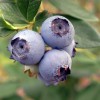 This 8-page fact sheet provides updated information about the recent trends in blueberry production, consumption, and trade for the US market. Current and future short-term trends are discussed. Price analysis at the wholesale level for selected markets on the US East Coast (New York City) and US West Coast (Los Angeles) are presented. Also, the national average retail prices for conventional and organic blueberries are presented. Written by Edward A. Evans and Fredy H. Ballen, and published by the UF Department of Food and Resource Economics, October 2014.
This 8-page fact sheet provides updated information about the recent trends in blueberry production, consumption, and trade for the US market. Current and future short-term trends are discussed. Price analysis at the wholesale level for selected markets on the US East Coast (New York City) and US West Coast (Los Angeles) are presented. Also, the national average retail prices for conventional and organic blueberries are presented. Written by Edward A. Evans and Fredy H. Ballen, and published by the UF Department of Food and Resource Economics, October 2014.
http://edis.ifas.ufl.edu/fe952
Category: Agriculture
Converting from seepage irrigation to plasticulture for vegetable production: a case study and on-farm demonstration
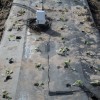 Cabbage production in Florida has been dominated by the use of seepage or sub-irrigation, because it is inexpensive to maintain and simple to use, but it can require vast quantities of water to be pumped from the aquifer in low rainfall years. Plasticulture has been proposed as an alternative production method for cabbage production in Florida. An on-farm demonstration was setup on Greene’s Farms in Bunnell, FL to provide a platform for collaboration between researchers, growers and extension professionals. This 6-page fact sheet illustrates an innovative approach converting from seepage irrigation to plasticulture and points out some options and challenges for growers considering a plasticulture system. Written by Charles E. Barrett, Lincoln Zotarelli, Brian S. Taylor, Lucas G. Paranhos, and Mark Warren, and published by the UF Department of Horticultural Sciences, July 2014.
Cabbage production in Florida has been dominated by the use of seepage or sub-irrigation, because it is inexpensive to maintain and simple to use, but it can require vast quantities of water to be pumped from the aquifer in low rainfall years. Plasticulture has been proposed as an alternative production method for cabbage production in Florida. An on-farm demonstration was setup on Greene’s Farms in Bunnell, FL to provide a platform for collaboration between researchers, growers and extension professionals. This 6-page fact sheet illustrates an innovative approach converting from seepage irrigation to plasticulture and points out some options and challenges for growers considering a plasticulture system. Written by Charles E. Barrett, Lincoln Zotarelli, Brian S. Taylor, Lucas G. Paranhos, and Mark Warren, and published by the UF Department of Horticultural Sciences, July 2014.
http://edis.ifas.ufl.edu/hs1246
Candidate Species for Marine Ornamental Aquaculture: Porkfish, Anisotremis virginicus
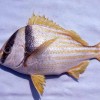 The porkfish is a member of the grunt family, which create a characteristic “grunting” sound by rubbing their pharyngeal teeth together during periods of agitation or courtship. Many species of grunts are popular in public aquariums because they’re abundantly available, and their schooling behavior and bright colors create interest in aquarium exhibits. Porkfish also have additional appeal to aquarists because they are “cleaner” fish during their juvenile phase, picking parasites from larger fish and other vertebrates. Scientists and aquarists have recently achieved a greater understanding of appropriate aquaculture protocols for grunts in general and porkfish in particular. These characteristics and advancements have led to porkfish being identified as a candidate species for commercial aquaculture. This 5-page fact sheet was written by Eric Cassiano and Kevin Barden, and published by the UF Department of Fisheries and Aquatic Sciences, October 2014. (Photo by George H. Burgess, Florida Museum of Natural History)
The porkfish is a member of the grunt family, which create a characteristic “grunting” sound by rubbing their pharyngeal teeth together during periods of agitation or courtship. Many species of grunts are popular in public aquariums because they’re abundantly available, and their schooling behavior and bright colors create interest in aquarium exhibits. Porkfish also have additional appeal to aquarists because they are “cleaner” fish during their juvenile phase, picking parasites from larger fish and other vertebrates. Scientists and aquarists have recently achieved a greater understanding of appropriate aquaculture protocols for grunts in general and porkfish in particular. These characteristics and advancements have led to porkfish being identified as a candidate species for commercial aquaculture. This 5-page fact sheet was written by Eric Cassiano and Kevin Barden, and published by the UF Department of Fisheries and Aquatic Sciences, October 2014. (Photo by George H. Burgess, Florida Museum of Natural History)
http://edis.ifas.ufl.edu/fa187
Description of Enhanced-Efficiency Fertilizers for Use in Vegetable Production
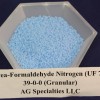 In response to the Federal Clean Water Act of 1972 and the Florida Restoration Act of 1999, a series of best management practices (BMPs) was implemented to improve surface and ground water quality. BMPs are cultural practices that, when implemented as a plan, help reduce the environmental impact of production while maintaining yield and quality. One of these BMPs includes the use of controlled-release fertilizer, which is an enhanced-efficiency fertilizer. This publication describes the common enhanced-efficiency fertilizers and the factors affecting their use in Florida vegetable production. This 9-page fact sheet was written by Luther Carson and Monica Ozores-Hampton, and published by the UF Department of Horticultural Sciences, October 2014.
In response to the Federal Clean Water Act of 1972 and the Florida Restoration Act of 1999, a series of best management practices (BMPs) was implemented to improve surface and ground water quality. BMPs are cultural practices that, when implemented as a plan, help reduce the environmental impact of production while maintaining yield and quality. One of these BMPs includes the use of controlled-release fertilizer, which is an enhanced-efficiency fertilizer. This publication describes the common enhanced-efficiency fertilizers and the factors affecting their use in Florida vegetable production. This 9-page fact sheet was written by Luther Carson and Monica Ozores-Hampton, and published by the UF Department of Horticultural Sciences, October 2014.
http://edis.ifas.ufl.edu/hs1247
Mancha foliar causada por Xanthomonas en Ficus elastica
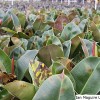 En verano del 2010, en viveros de Homestead se reportaron casos de Ficus elastica con manchas foliares circulares que se asemejan a los síntomas causados por la bacteria fitopatógena Xanthomonas campestris pv fici, aún no reportada en Ficus elastica. El daño severo affectó a la mayoría de los productores comerciales del sur de la Florida. This is the Spanish language version of Bacterial Blight of Ficus elastic Caused by Xanthomonas (PP305). This 3-page fact sheet was written by E. V. Campoverde, A. J. Palmateer, and P. Lopez, and published by the UF Department of Plant Pathology, July 2014.
En verano del 2010, en viveros de Homestead se reportaron casos de Ficus elastica con manchas foliares circulares que se asemejan a los síntomas causados por la bacteria fitopatógena Xanthomonas campestris pv fici, aún no reportada en Ficus elastica. El daño severo affectó a la mayoría de los productores comerciales del sur de la Florida. This is the Spanish language version of Bacterial Blight of Ficus elastic Caused by Xanthomonas (PP305). This 3-page fact sheet was written by E. V. Campoverde, A. J. Palmateer, and P. Lopez, and published by the UF Department of Plant Pathology, July 2014.
http://edis.ifas.ufl.edu/pp312
Tracking the Economic Benefits Generated by the Hard Clam Aquaculture Industry in Florida
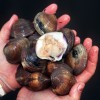 The hard clam industry is a true success story for commercial aquaculture in Florida. From a cottage industry borne of reductions in commercial wild clam harvests in the Indian River Lagoon during the late 1980s, hard clam aquaculture has now developed into an industry that is rivaled by no other aquaculture food product in Florida. Although successful by virtually any metric, the risks and uncertainty associated with commercial hard clam culture has led to the evaluation of programs that help mitigate risk, such as the former pilot Cultivated Clam Crop Insurance Program administered by USDA Risk Management Agency. All of this alludes to the economic importance of the hard clam culture industry which, through the cultivation process and sales of products, generates local income and taxes, creates jobs and businesses, and draws new money into the local economy, as cultured hard clams are sold to non-residents and buyers outside the region and state. This 6-page fact sheet provides an overview of a recent study by the University of Florida to provide an estimate of the impact of the hard clam industry to the Florida economy. Written by Charles Adams, Leslie Sturmer, and Alan Hodges, and published by the UF Department of Food and Resource Economics, October 2014. (UF/IFAS photo by Tom Wright)
The hard clam industry is a true success story for commercial aquaculture in Florida. From a cottage industry borne of reductions in commercial wild clam harvests in the Indian River Lagoon during the late 1980s, hard clam aquaculture has now developed into an industry that is rivaled by no other aquaculture food product in Florida. Although successful by virtually any metric, the risks and uncertainty associated with commercial hard clam culture has led to the evaluation of programs that help mitigate risk, such as the former pilot Cultivated Clam Crop Insurance Program administered by USDA Risk Management Agency. All of this alludes to the economic importance of the hard clam culture industry which, through the cultivation process and sales of products, generates local income and taxes, creates jobs and businesses, and draws new money into the local economy, as cultured hard clams are sold to non-residents and buyers outside the region and state. This 6-page fact sheet provides an overview of a recent study by the University of Florida to provide an estimate of the impact of the hard clam industry to the Florida economy. Written by Charles Adams, Leslie Sturmer, and Alan Hodges, and published by the UF Department of Food and Resource Economics, October 2014. (UF/IFAS photo by Tom Wright)
http://edis.ifas.ufl.edu/fe961
The Four Rs of Fertilizer Management
 Supplying needed nutrients for crop production involves attention to four major fertilization factors (the 4Rs): right rate, right source, right placement, and right timing. Attention to these factors will provide adequate nutrition for crop production while minimizing the risk of loss of nutrients to the environment. In this publication each factor is described, as well as how the information can be provided from a soil test report. While not a formal part of the 4Rs, the importance of irrigation to overall nutrient management is stressed in this 4-page fact sheet written by George Hochmuth, Rao Mylavarapu, and Ed Hanlon, and published by the UF Department of Soil and Water Science, October 2014.
Supplying needed nutrients for crop production involves attention to four major fertilization factors (the 4Rs): right rate, right source, right placement, and right timing. Attention to these factors will provide adequate nutrition for crop production while minimizing the risk of loss of nutrients to the environment. In this publication each factor is described, as well as how the information can be provided from a soil test report. While not a formal part of the 4Rs, the importance of irrigation to overall nutrient management is stressed in this 4-page fact sheet written by George Hochmuth, Rao Mylavarapu, and Ed Hanlon, and published by the UF Department of Soil and Water Science, October 2014.
http://edis.ifas.ufl.edu/ss624
Fertilizer Recommendation Philosophies
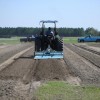 Farmers receive varying fertilizer recommendations depending on which lab they consult because labs employ different chemical methods and procedures to analyze the samples and subscribe to different fertilizer recommendation philosophies. This 4-page fact sheet explains the main soil-test philosophies, their basis, and their applications, and explains why the Sufficiency Level of Available Nutrient philosophy (SLAN), also called the Crop Nutrient Requirement (CNR), is most likely to be the best to govern fertilizer recommendations in Florida today. Written by George Hochmuth, Rao Mylavarapu, and Ed Hanlon, and published by the UF Department of Soil and Water Science, October 2014. (Photo by George Hochmuth, UF/IFAS)
Farmers receive varying fertilizer recommendations depending on which lab they consult because labs employ different chemical methods and procedures to analyze the samples and subscribe to different fertilizer recommendation philosophies. This 4-page fact sheet explains the main soil-test philosophies, their basis, and their applications, and explains why the Sufficiency Level of Available Nutrient philosophy (SLAN), also called the Crop Nutrient Requirement (CNR), is most likely to be the best to govern fertilizer recommendations in Florida today. Written by George Hochmuth, Rao Mylavarapu, and Ed Hanlon, and published by the UF Department of Soil and Water Science, October 2014. (Photo by George Hochmuth, UF/IFAS)
http://edis.ifas.ufl.edu/ss623
Soil Testing for Plant-Available Nutrients: What Is It and Why Do We Use It?
 Farmers need soil-testing procedures to assess soils for potential plant-available nutrients. Soil testing is the foremost best management practice (BMP). It helps farmers achieve profitable crops while protecting the environment from excessive fertilization and nutrient losses. This 5-page fact sheet describes the important steps required to test soil for potential plant-available nutrients. Written by George Hochmuth, Rao Mylavarapu, and Ed Hanlon, and published by the UF Department of Soil and Water Science, October 2014.
Farmers need soil-testing procedures to assess soils for potential plant-available nutrients. Soil testing is the foremost best management practice (BMP). It helps farmers achieve profitable crops while protecting the environment from excessive fertilization and nutrient losses. This 5-page fact sheet describes the important steps required to test soil for potential plant-available nutrients. Written by George Hochmuth, Rao Mylavarapu, and Ed Hanlon, and published by the UF Department of Soil and Water Science, October 2014.
http://edis.ifas.ufl.edu/ss621
Developing a Soil Test Extractant: The Correlation and Calibration Processes
 An understanding of soil testing is an important part of preventing excess fertilizer applications that can potentially impact the environment and ensuring commercially viable yields and aesthetic, healthy landscapes. This 4-page fact sheet describes the process UF/IFAS soil scientists used to develop a predictive and/or diagnostic soil test that can be depended on by commercial agricultural and horticultural producers as well as homeowners and can provide accurate nutrient recommendations or diagnose nutrient imbalances for crops or plants. Written by George Hochmuth, Rao Mylavarapu, and Ed Hanlon, and published by the UF Department of Soil and Water Science, October 2014.
An understanding of soil testing is an important part of preventing excess fertilizer applications that can potentially impact the environment and ensuring commercially viable yields and aesthetic, healthy landscapes. This 4-page fact sheet describes the process UF/IFAS soil scientists used to develop a predictive and/or diagnostic soil test that can be depended on by commercial agricultural and horticultural producers as well as homeowners and can provide accurate nutrient recommendations or diagnose nutrient imbalances for crops or plants. Written by George Hochmuth, Rao Mylavarapu, and Ed Hanlon, and published by the UF Department of Soil and Water Science, October 2014.
http://edis.ifas.ufl.edu/ss622
2014 Cool-Season Forage Variety Recommendations for Florida
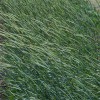 This 4-page fact sheet provides the most up-to-date information on current adapted varieties of cool-season forages. The recommendation of varieties is based on multi-location, multi-year cultivar evaluation experiments that may include trials in Georgia and other states. Table 1 includes information about the planting dates, seeding rates, and other considerations. If you have questions about a particular variety, contact your local UF/IFAS Extension agent for additional information. Written by A. R. Blount, J. M. B. Vendramini, J. C. B. Dubeux, Md A. Babar, K. E. Kenworthy, P. R. Muñoz,and K. H. Quesenberry, and published by the UF Department of Agronomy, September 2014. (UF/IFAS Photo: Josh Wickam)
This 4-page fact sheet provides the most up-to-date information on current adapted varieties of cool-season forages. The recommendation of varieties is based on multi-location, multi-year cultivar evaluation experiments that may include trials in Georgia and other states. Table 1 includes information about the planting dates, seeding rates, and other considerations. If you have questions about a particular variety, contact your local UF/IFAS Extension agent for additional information. Written by A. R. Blount, J. M. B. Vendramini, J. C. B. Dubeux, Md A. Babar, K. E. Kenworthy, P. R. Muñoz,and K. H. Quesenberry, and published by the UF Department of Agronomy, September 2014. (UF/IFAS Photo: Josh Wickam)
http://edis.ifas.ufl.edu/aa266
A Farm to School Procurement Calculator for Specialty Crop Producers and School Food Service Staff
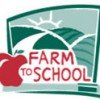 Florida Farm to School programs are designed to connect producers with schools. But school food service staff make their purchasing decisions in terms of servings and producers pack their products by weight. General calculators and guides designed for national Farm to School programs don’t address Florida’s diverse production of fresh fruits and vegetables. This procurement calculator and guide for Florida Farm to School programs was written by Jonathan A. Watson, Danielle Treadwell, Anna Prizzia, and Kelli Brew, and published by the UF Department of Horticultural Sciences, September 2014.
Florida Farm to School programs are designed to connect producers with schools. But school food service staff make their purchasing decisions in terms of servings and producers pack their products by weight. General calculators and guides designed for national Farm to School programs don’t address Florida’s diverse production of fresh fruits and vegetables. This procurement calculator and guide for Florida Farm to School programs was written by Jonathan A. Watson, Danielle Treadwell, Anna Prizzia, and Kelli Brew, and published by the UF Department of Horticultural Sciences, September 2014.
http://edis.ifas.ufl.edu/hs1250
Jalapeño and Other Hot Pepper Varieties for Florida
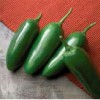
The jalapeño is derived from the Capsicum genus of the family Solanaceae. Jalapeños are members of a diverse group, which also include ancho poblano, cayenne, serrano, Anaheim, banana, Asian, habanero, and Hungarian wax peppers. Hot peppers are classified by their heat and shape. The heat of the pepper comes from the chemical compound capsaicin, which is measured by the Scoville scale. This 8-page fact sheet is a guide of jalapeño and other hot pepper varieties used in Florida was written by Monica Ozores-Hampton and Gene McAvoy, and published by the UF Department of Horticultural Sciences, October 2014.
http://edis.ifas.ufl.edu/hs1241
Growth Stages and Tuber Development of FL1867 Potato under Full and Reduced Irrigation Scheduling
 The potato cultivar ‘Frito Lay 1867’ (‘FL 1867’) is a popular chipping variety grown across Florida and the southern United States. Knowledge of the timing and duration of the tuber initiation and tuber bulking stages for ‘FL 1867’ is critical for timing fertilizer and irrigation applications. So to evaluate the start and length of the tuber initiation and tuber bulking stages under Florida growing conditions, ‘FL 1867’ plants were dug up and photographed on a weekly basis from a commercial field near Live Oak, FL in 2012. This 3-page fact sheet was written by Seth A. Byrd, Diane L. Rowland, and Lincoln Zotarelli, and published by the UF Department of Agronomy, September 2014.
The potato cultivar ‘Frito Lay 1867’ (‘FL 1867’) is a popular chipping variety grown across Florida and the southern United States. Knowledge of the timing and duration of the tuber initiation and tuber bulking stages for ‘FL 1867’ is critical for timing fertilizer and irrigation applications. So to evaluate the start and length of the tuber initiation and tuber bulking stages under Florida growing conditions, ‘FL 1867’ plants were dug up and photographed on a weekly basis from a commercial field near Live Oak, FL in 2012. This 3-page fact sheet was written by Seth A. Byrd, Diane L. Rowland, and Lincoln Zotarelli, and published by the UF Department of Agronomy, September 2014.
http://edis.ifas.ufl.edu/ag388
Pool Chemicals and Personal Safety
 Pool chemicals are among the most common household substances and are used to protect health in recreational waters. Pool chemicals containing chlorine safeguard against recreational-water illnesses caused by disease-causing pathogens, such as the diarrhea-causing Cryptosporidium. They also enhance disinfection by regulating water pH. But even though these materials are regularly handled by homeowners, most don’t ever realize that they are handling pesticides. This 3-page fact sheet was written by Fred Fishel, and published by the UF Department of Agronomy, September 2014.
Pool chemicals are among the most common household substances and are used to protect health in recreational waters. Pool chemicals containing chlorine safeguard against recreational-water illnesses caused by disease-causing pathogens, such as the diarrhea-causing Cryptosporidium. They also enhance disinfection by regulating water pH. But even though these materials are regularly handled by homeowners, most don’t ever realize that they are handling pesticides. This 3-page fact sheet was written by Fred Fishel, and published by the UF Department of Agronomy, September 2014.
http://edis.ifas.ufl.edu/pi253
University of Florida Potato Variety Trial Program: 'Elkton' Commercial Evaluation
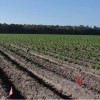 The ‘Elkton’ chipping potato variety was tested on a commercial scale at two growers’ farms in Florida during the 2011 season. The average yield of ‘Elkton’ in the commercial trials ranged between 295 and 324 cwt/ac, an average of 11 percent higher than that of the standard ‘Atlantic,’ and comparable to the yield range obtained in 19 trials conducted over a nine-year period by the University of Florida. This 4-page fact sheet was written by Lincoln Zotarelli, Douglas Gergela, and Dana Fourman, and published by the UF Department of Horticultural Sciences, October 2014.
The ‘Elkton’ chipping potato variety was tested on a commercial scale at two growers’ farms in Florida during the 2011 season. The average yield of ‘Elkton’ in the commercial trials ranged between 295 and 324 cwt/ac, an average of 11 percent higher than that of the standard ‘Atlantic,’ and comparable to the yield range obtained in 19 trials conducted over a nine-year period by the University of Florida. This 4-page fact sheet was written by Lincoln Zotarelli, Douglas Gergela, and Dana Fourman, and published by the UF Department of Horticultural Sciences, October 2014.
http://edis.ifas.ufl.edu/hs1253
Sugarcane Orange Rust
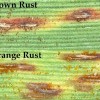 In June 2007, rust symptoms were observed on sugarcane cultivar CP80-1743 about six miles east of Belle Glade, Florida. The disease was confirmed as orange rust of sugarcane. It is hypothesized that rust spores were blown into the region as a disperse spore cloud from an unknown source rather than spread from a single or several small focal points. This 7-page fact sheet was written by P. Rott, S. Sood, J. C. Comstock, R. N. Raid, N. C. Glynn, R. A. Gilbert, and H. S. Sandhu, and published by the UF Department of Agronomy, May 2014.
In June 2007, rust symptoms were observed on sugarcane cultivar CP80-1743 about six miles east of Belle Glade, Florida. The disease was confirmed as orange rust of sugarcane. It is hypothesized that rust spores were blown into the region as a disperse spore cloud from an unknown source rather than spread from a single or several small focal points. This 7-page fact sheet was written by P. Rott, S. Sood, J. C. Comstock, R. N. Raid, N. C. Glynn, R. A. Gilbert, and H. S. Sandhu, and published by the UF Department of Agronomy, May 2014.
http://edis.ifas.ufl.edu/sc099
A Practical Guide for Aquaponics as an Alternative Enterprise
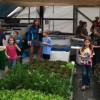 Aquaponics is an intensive sustainable agricultural production system that connects hydroponic and aquaculture systems to produce multiple cash crops with reduced water and fertilizer inputs. It is highly suited for small farm producers targeting local markets and agritourism opportunities. This 10-page fact sheet was written by Richard Tyson and Eric Simonne, and published by the UF Department of Horticultural Sciences, September 2014.
Aquaponics is an intensive sustainable agricultural production system that connects hydroponic and aquaculture systems to produce multiple cash crops with reduced water and fertilizer inputs. It is highly suited for small farm producers targeting local markets and agritourism opportunities. This 10-page fact sheet was written by Richard Tyson and Eric Simonne, and published by the UF Department of Horticultural Sciences, September 2014.
http://edis.ifas.ufl.edu/hs1252
Conventional and Specialty Eggplant Varieties in Florida
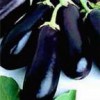 Eggplants are members of the nightshade family Solanaceae. Cultural practices employed in eggplant production are similar to tomatoes and peppers. In south Florida, where winters are mild and freezes are infrequent, eggplants are planted from August to March. This 5-page fact sheet is a guide to eggplant varieties commonly used in Florida. Written by Monica Ozores-Hampton, and published by the UF Department of Horticultural Sciences, October 2014.
Eggplants are members of the nightshade family Solanaceae. Cultural practices employed in eggplant production are similar to tomatoes and peppers. In south Florida, where winters are mild and freezes are infrequent, eggplants are planted from August to March. This 5-page fact sheet is a guide to eggplant varieties commonly used in Florida. Written by Monica Ozores-Hampton, and published by the UF Department of Horticultural Sciences, October 2014.
http://edis.ifas.ufl.edu/hs1243
Effect of Anovulation and Subclinical Endometritis on Fertility of Lactating Dairy Cows: Why Are Dairy Cows Not Getting Pregnant: Lack of Cyclicity, Uterine Disease, or Both?
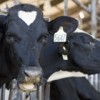 Virtually all Holstein dairy cows have the first wave of follicle growth starting two weeks postpartum, with about 30% of these cows ovulating within 21 days in milk. This 3-page fact sheet presents the results of a recent paper that evaluated the individual and combined effects of anovulation and subclinical endometritis on reproductive performance of dairy cows. Written by Klibs N. Galvão and Achilles Vieira-Neto, and published by the UF Department of Veterinary Medicine-Large Animal Clinical Sciences, May 2014.
Virtually all Holstein dairy cows have the first wave of follicle growth starting two weeks postpartum, with about 30% of these cows ovulating within 21 days in milk. This 3-page fact sheet presents the results of a recent paper that evaluated the individual and combined effects of anovulation and subclinical endometritis on reproductive performance of dairy cows. Written by Klibs N. Galvão and Achilles Vieira-Neto, and published by the UF Department of Veterinary Medicine-Large Animal Clinical Sciences, May 2014.
http://edis.ifas.ufl.edu/vm222